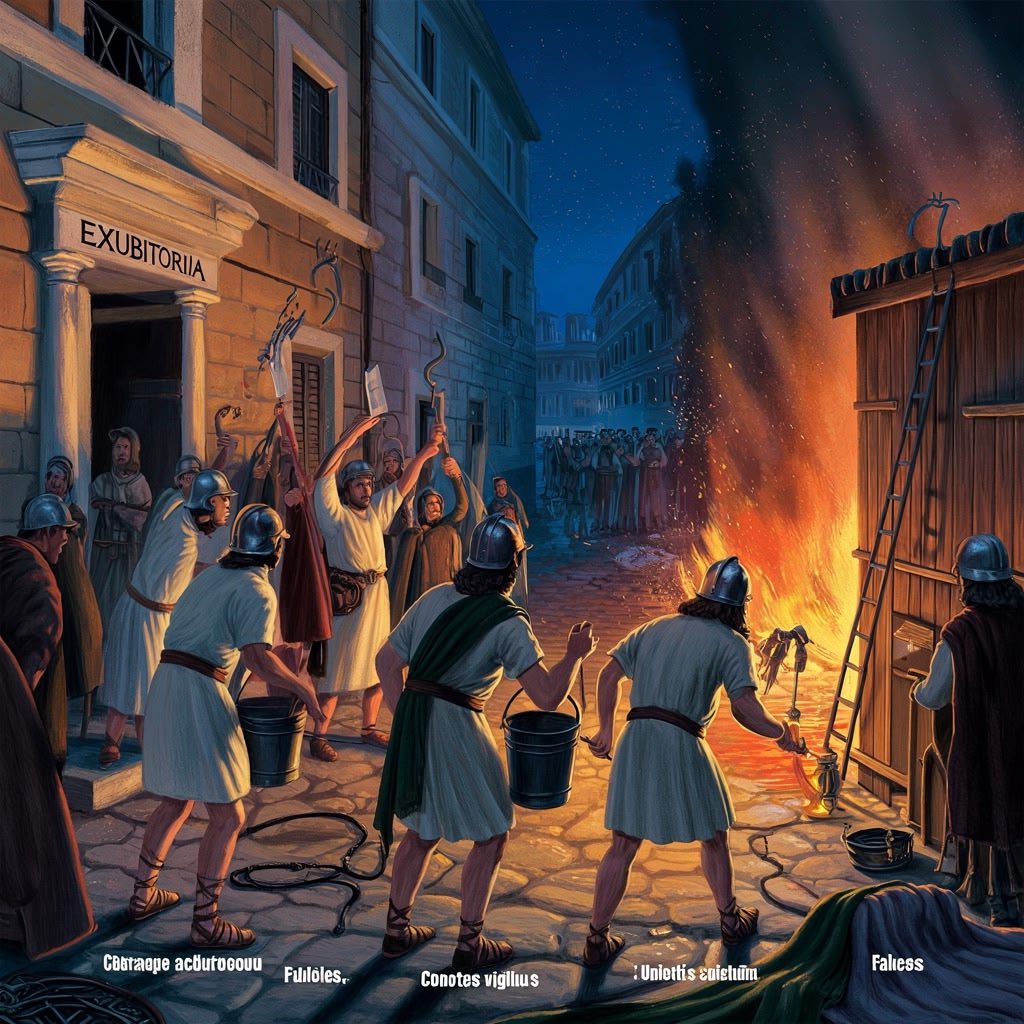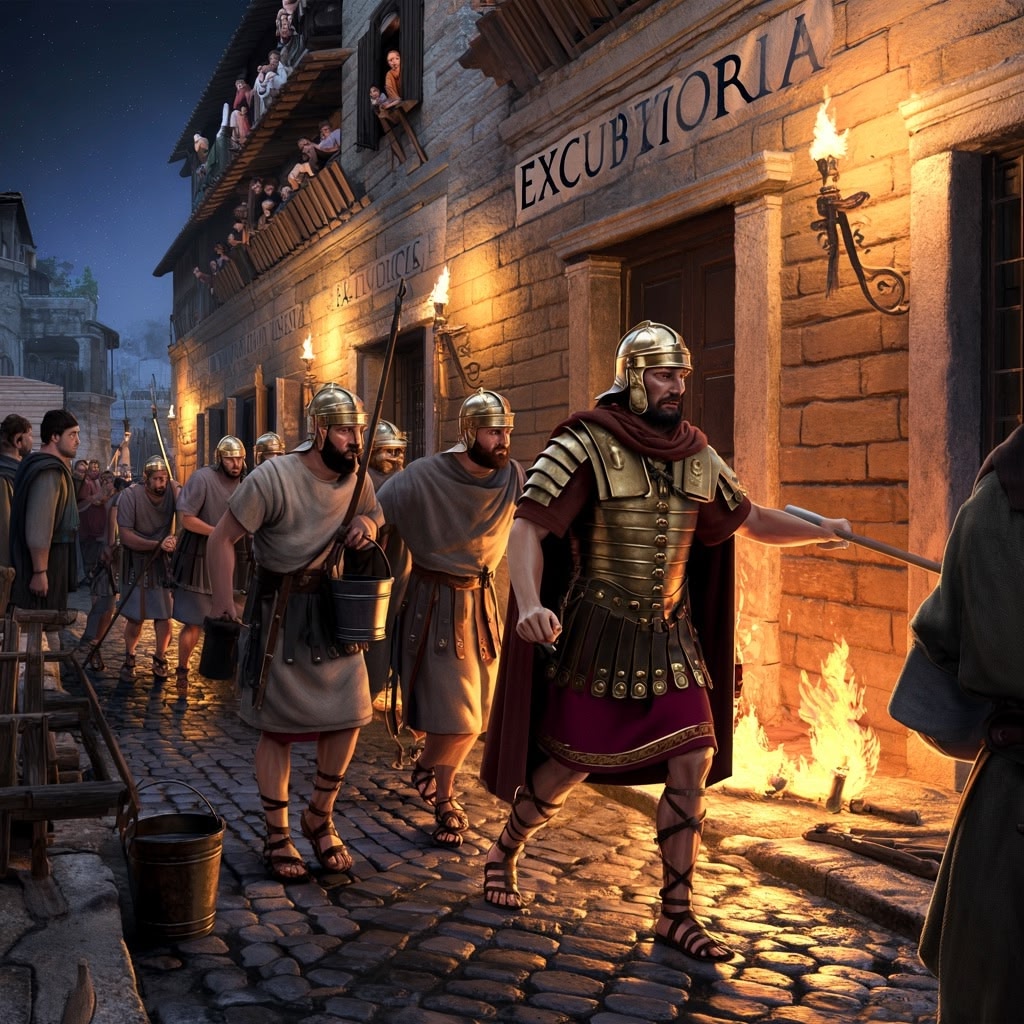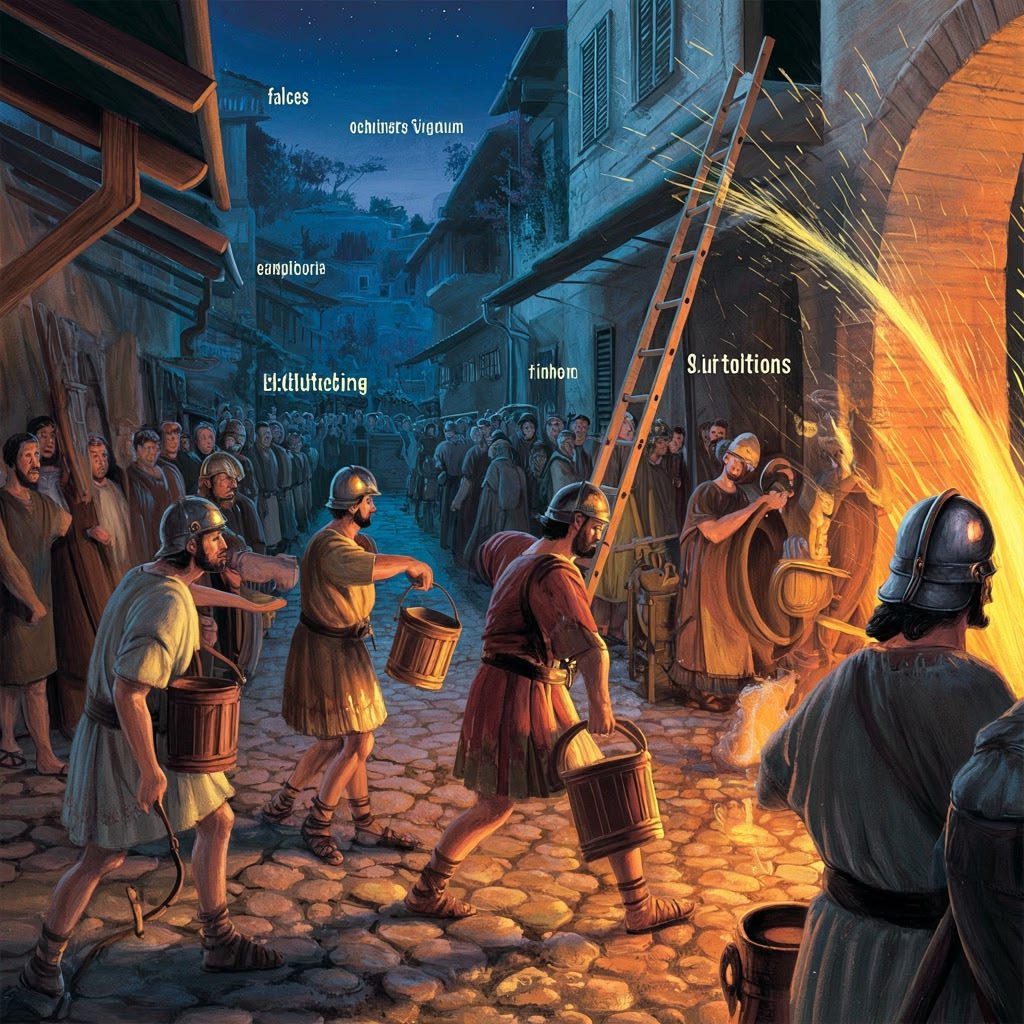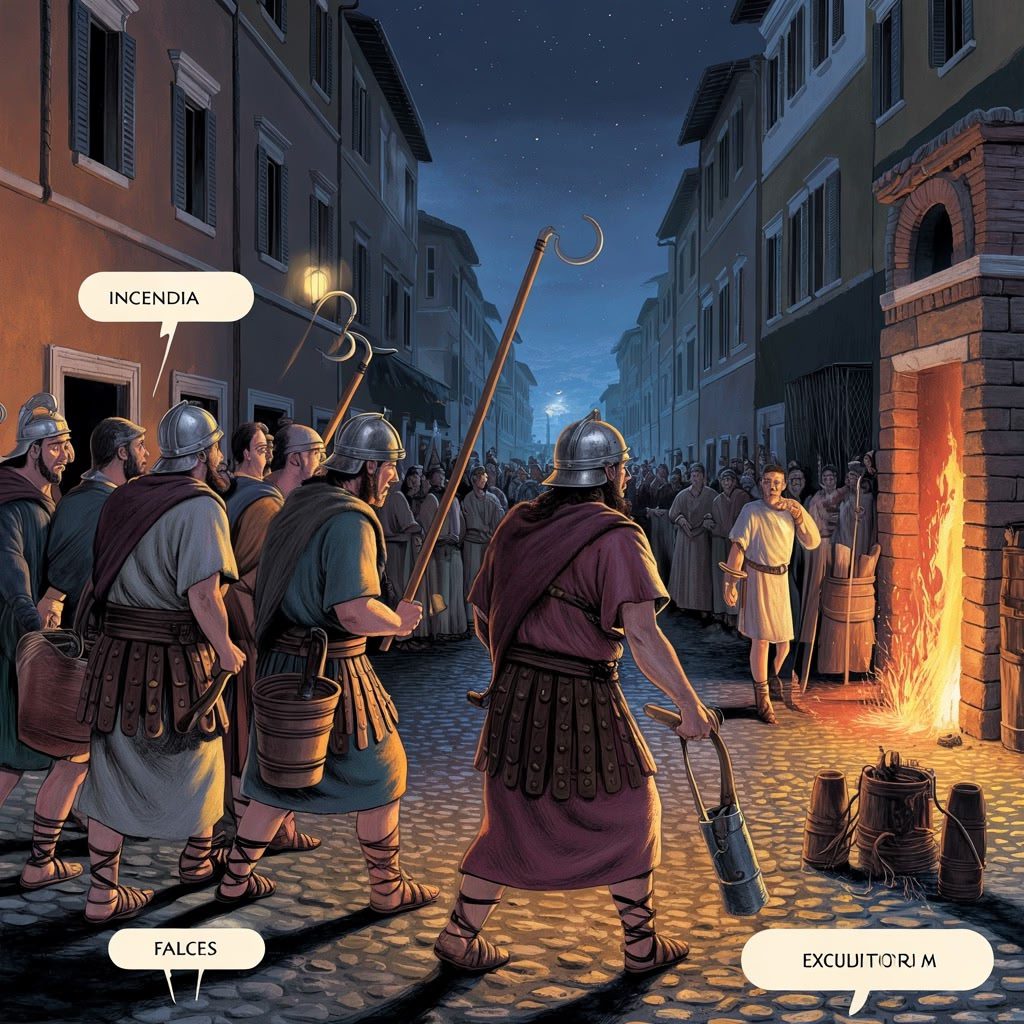Ancient Roman Fire Brigades played a crucial role in maintaining urban safety in one of history’s largest cities. Faced with the constant threat of devastating fires, especially due to wooden structures and open flames, Rome developed an organized firefighting force that was both preventive and reactive.
This early system, established under Emperor Augustus, consisted of dedicated units tasked with fire surveillance, rapid response, and public order enforcement. Their structured approach not only minimized fire damage but also set standards for city planning and safety regulations.
The organization of these fire brigades reflects the broader structure of power in the Roman Republic, which transitioned from monarchy to a complex political structure. This system laid the foundation for modern democracies and established key principles of governance that resonate today.
Key takeaway: The Ancient Roman Fire Brigades represent a pioneering model in the history of firefighting. Their comprehensive organization and strategic deployment laid the groundwork for many modern urban safety measures still relevant today.
The Formation of Cohortes Vigilum
The Cohortes Vigilum, established by Emperor Augustus in 6 AD, marked a significant development in urban safety. This was Rome’s first official firefighting force, transforming firefighting from an ad hoc community effort into a professional and organized service. The creation of the Vigiles was a direct response to the frequent and devastating fires that plagued the city, exacerbated by the dense wooden structures and narrow streets.
Structure and Organization
Structured as a paramilitary corps comprising approximately 7,000 professional firefighters, the Vigiles were divided into seven cohorts, each assigned to oversee two of the city’s fourteen administrative regions. Each cohort was further split into centuries led by centurions, creating a clear chain of command and efficient operational management.
Responsibilities Beyond Firefighting
Their responsibilities extended beyond direct firefighting:
- Fire prevention: Conducting inspections to identify fire hazards and enforce regulations.
- Surveillance: Patrolling the streets, especially at night, to detect early signs of fire.
- Maintaining public order: Controlling crowds during emergencies and preventing looting in fire-affected areas.
This comprehensive approach made the Vigiles not just responders but active protectors of Rome’s urban environment. Their deployment across all parts of the city ensured extensive coverage, enhancing rapid response capabilities.
Legacy of Cohortes Vigilum
The organization of the Cohortes Vigilum set a precedent for future emergency services by combining preventive strategies with immediate action. This model of a specialized, disciplined firefighting force was unique in antiquity and demonstrated Roman commitment to urban safety through centralized control and professionalization.

Understanding the Context: Ancient Rome’s Evolution
To fully appreciate this transformation in urban safety, one must understand the broader context of ancient Rome’s evolution. Founded in 753 BC, Rome began as a small settlement along the Tiber River and gradually evolved into one of the most powerful empires in history. This story is not merely one of conquest and expansion; it is also a tale of innovation, culture, and governance that has left an indelible mark on the world.
Moreover, figures like Scipio Africanus, who played a crucial role in establishing Rome’s dominance over Carthage during the Second Punic War, significantly shaped Roman history. Such military might exemplified by leaders like Scipio was also reflected in the structure and strategies of the Roman Army, which played a crucial role in the growth and upkeep of the Roman Empire.
Understanding these aspects is essential for grasping not only the formation of specialized services like the Cohortes Vigilum but also the lives of plebeians – Rome’s common people who were vital to the fabric of Roman society. Their experiences represent the majority and significantly influenced the development of political and economic structures within this vast empire.

Firefighting Tools and Techniques Used by the Vigiles
The Tools of the Vigiles were essential in managing fires across ancient Rome. These firefighters used a variety of specialized equipment designed to address different aspects of fire outbreaks and minimize damage to structures.
Key firefighting equipment included:
- Buckets: Usually made from leather or wood, buckets were the main way to transport water to extinguish flames. Teams often formed bucket brigades, passing water hand-to-hand from nearby sources to the fire front.
- Hooks (Falcēs): Large metal hooks served multiple purposes such as pulling down burning material or dismantling wooden structures to create firebreaks. This technique limited the spread and intensity of fires by removing available fuel.
- Pumps (Siphones): Early versions of fire pumps used leather hoses connected to water sources. These siphones allowed for a directed stream of water, increasing efficiency compared to bucket-only methods.
- Axes and Saws: Crucial for breaking through locked doors or walls, axes and saws also helped clear flammable debris quickly.
- Wet Blankets (Centones): Thick, soaked cloths were thrown over flames to smother small fires, especially useful indoors or in narrow alleys where water access was limited.
- Ladders and Ropes: Necessary for reaching upper floors or rooftops where fires commonly started due to open hearths and lamps.
Each tool had a specific role adapted to the urban environment of Rome, where closely packed wooden buildings increased fire risks. Buckets were critical in directly suppressing flames; hooks and axes enabled containment by creating gaps; pumps increased reach and power; wet blankets controlled flare-ups without causing water damage.
This combination of equipment shows a practical understanding of how fires behave, emphasizing both actively putting out fires and strategically containing them. The Vigiles’ ability to use these tools effectively played a significant role in reducing damage, protecting infrastructure, and ensuring public safety within the sprawling cityscape.

Deployment Strategies and Nighttime Operations
The deployment strategies of the Vigiles were crucial in ensuring a swift and efficient response to fires in ancient Rome. Here are some key points to consider:
1. Quick Response Times
The Vigiles were strategically stationed throughout the city to minimize the time taken to reach fire incidents. By dividing Rome into operational regions, they could swiftly mobilize firefighters to the affected areas.
2. Night Patrols
Nighttime operations were a fundamental aspect of fire prevention for the Vigiles. Fire outbreaks were more challenging to detect in the dark, making regular patrols essential. The Vigiles patrolled the city streets, equipped with lamps for visibility, to identify and extinguish potential fires before they spread.
3. Preventive Measures
The nighttime patrols not only aimed to detect fires but also served as a deterrent against arson and other criminal activities. The presence of firefighters on the streets instilled a sense of security among the populace and contributed to maintaining public order.
4. Efficient Coordination
The Cohortes Vigilum’s organizational structure enabled seamless coordination during emergencies. Each cohort had designated responsibilities, ensuring that firefighting efforts were well-coordinated and resources were allocated effectively.
5. Community Engagement
The visibility of the Vigiles during nighttime operations fostered community engagement. Residents felt assured knowing that dedicated firefighters were actively safeguarding their neighborhoods, promoting a sense of collective responsibility for urban safety. Furthermore, such community involvement is essential as highlighted in this guide on engaging communities, which emphasizes building trust and collaboration between law enforcement and community members.
By implementing robust deployment strategies and conducting vigilant nighttime operations, the ancient Roman fire brigades exemplified proactive urban safety measures that resonate with contemporary approaches to firefighting and emergency response.

Ancient Fire Stations: Excubitoria and Their Role in Urban Safety
Ancient Roman fire stations, such as the excubitorium in Trastevere, played a crucial role in the city’s firefighting efforts. Here are some key points to consider:
1. Description of Ancient Fire Stations
The excubitorium in Trastevere, dating back to ancient Rome, served as a pivotal hub for firefighters. These stations were strategically located throughout the city to ensure quick responses to fire emergencies. The excubitorium was more than just a base; it was a symbol of preparedness and vigilance in safeguarding the city against the ever-looming threat of fires.
2. Significance of Dedicated Spaces
These fire stations were not merely buildings but operational centers equipped with essential tools and resources for firefighting. They housed firefighters and stored equipment like buckets, axes, ladders, and ropes.
The presence of dedicated fire stations ensured that firefighters could swiftly mobilize and respond to fires without delay, showcasing the Romans’ forward-thinking approach to urban safety.
By focusing on these ancient fire stations, particularly the excubitorium in Trastevere, we gain insight into how early civilizations prioritized urban safety. This focus on safety was part of a broader spectrum of societal organization in ancient Rome which also included entertainment forms like gladiators games and chariot races that significantly influenced social relationships and political authority. For a deeper understanding of such aspects of Ancient Roman life, it’s beneficial to explore resources dedicated to this fascinating period.
The practices established by these ancient fire stations laid foundational strategies that continue to influence modern firefighting today. Furthermore, the legacy of Ancient Rome extends beyond its historical context; it has shaped various aspects of Western civilization. This enduring impact is explored further in articles discussing the legacy of ancient Rome.
In addition to academic pursuits, engaging with Roman history can also be experienced through immersive platforms like Second Life, where one can partake in role-playing games set in historical contexts such as Romanum.
Lastly, understanding how Roman roads facilitated not just trade but also emergency response during those times provides further insight into the advanced infrastructure that supported their urban safety measures.

Lessons from Ancient Roman Fire Brigades for Modern Urban Planning
The Great Fire of Rome in 64 AD was a crucial event that revealed the weaknesses of urban infrastructure and led to significant changes in city planning and fire safety regulations. Emperor Nero’s response to the disaster introduced measures aimed at preventing such widespread destruction from happening again.
Key Rebuilding Measures
Some of the key rebuilding measures implemented during this time included:
- Wider streets: Designed to act as firebreaks, these reduced the risk of flames spreading rapidly between buildings.
- Limited building heights: Restricting height helped control fire intensity and eased firefighting access.
- Internal courtyards and porticoes: These architectural features improved ventilation and created safer spaces that could slow down or contain fires.
- Use of fireproof materials: Nero mandated the use of stone and brick instead of wood, which had previously been the primary construction materials contributing to fire hazards.
- Prohibition of shared walls: Buildings were required to have separate walls to prevent fire from leaping across contiguous structures.
Responsibility of Property Owners
Property owners were responsible for implementing these regulations. They had to ensure their buildings complied with new standards by using fire-resistant construction materials and equipping their properties with basic firefighting tools. Water access was also regulated carefully to guarantee availability during emergencies.
Impact on Community Culture
These urban planning reforms not only enhanced safety but also introduced a culture of accountability for fire prevention within the community. The emphasis on proactive measures, combined with organized firefighting brigades like the Vigiles, created a multi-layered defense against urban fires.
This approach highlights how integrating regulatory frameworks, architectural design, and individual responsibility can form an effective model for modern cities striving to mitigate fire risks.
Contrasting Ancient Practices with Contemporary Approaches to Urban Safety
Examining how ancient Roman firefighting methods differ from modern-day strategies employed in urban planning today, we can draw valuable insights for enhancing urban safety measures:
1. Technological Advancements
While ancient Roman firefighters primarily used simple tools like buckets, hooks, and pumps, modern urban safety measures benefit from advanced technology such as fire-resistant materials, sprinkler systems, smoke detectors, and fire alarms.
2. Training and Specialization
In ancient Rome, firefighters were often civilians with basic training. This was reflective of the broader societal structure where daily life varied vastly across different social classes. Daily life in Ancient Rome was shaped by these social divides, and firefighters were no exception. Today, however, firefighters undergo rigorous training and specialization in handling various emergencies, including firefighting, medical emergencies, hazardous material incidents, and more.
3. Communication and Coordination
Modern urban safety practices emphasize effective communication and coordination among emergency responders through advanced radio systems, command centers, and mutual aid agreements. This ensures a swift and coordinated response to emergencies.
4. Preventive Measures
While both ancient Roman fire brigades and contemporary urban safety approaches focus on firefighting efforts, modern strategies also heavily prioritize preventive measures such as building codes, zoning regulations, fire inspections, public education campaigns, and community outreach programs.
5. Integration of Technology
Modern urban safety measures leverage technology for early detection of fires through smart sensors, drones for aerial surveillance, GIS mapping for risk assessment, and computer simulations for emergency response planning. This integration enhances preparedness and response capabilities.
Drawing parallels between ancient Roman fire brigades and contemporary urban safety practices allows us to appreciate the evolution of firefighting techniques. However, it is essential to understand that these ancient practices were deeply intertwined with the socio-political fabric of the time.
For instance:
- The legal framework governing these practices was largely influenced by The Twelve Tables, a significant milestone in the development of Roman law.
- The religious beliefs of the Romans also played a role in shaping their daily activities including firefighting efforts – a reflection of the comprehensive system that intertwined religion with every aspect of their lives.
Adapting to technological advancements while understanding the historical context of our current practices will lead to more effective urban safety measures.
Conclusion
The ancient Roman fire brigades have had a lasting impact on our understanding and implementation of effective urban safety measures. By reflecting on their legacy, we can appreciate the early organized efforts in firefighting and public safety services that laid the foundation for modern systems.
The significance of urban safety services throughout history is highlighted by the legacy of Roman fire brigades. The ancient Roman Fire Brigades: Urban Safety Then and Now demonstrate how early organized firefighting units established the groundwork for contemporary approaches to urban safety. This historical perspective also emphasizes the broader influence of Roman Law, which has been instrumental in shaping modern legal systems, and the birth of the Roman Republic, a significant moment in history with lasting impacts on present-day political structures.

